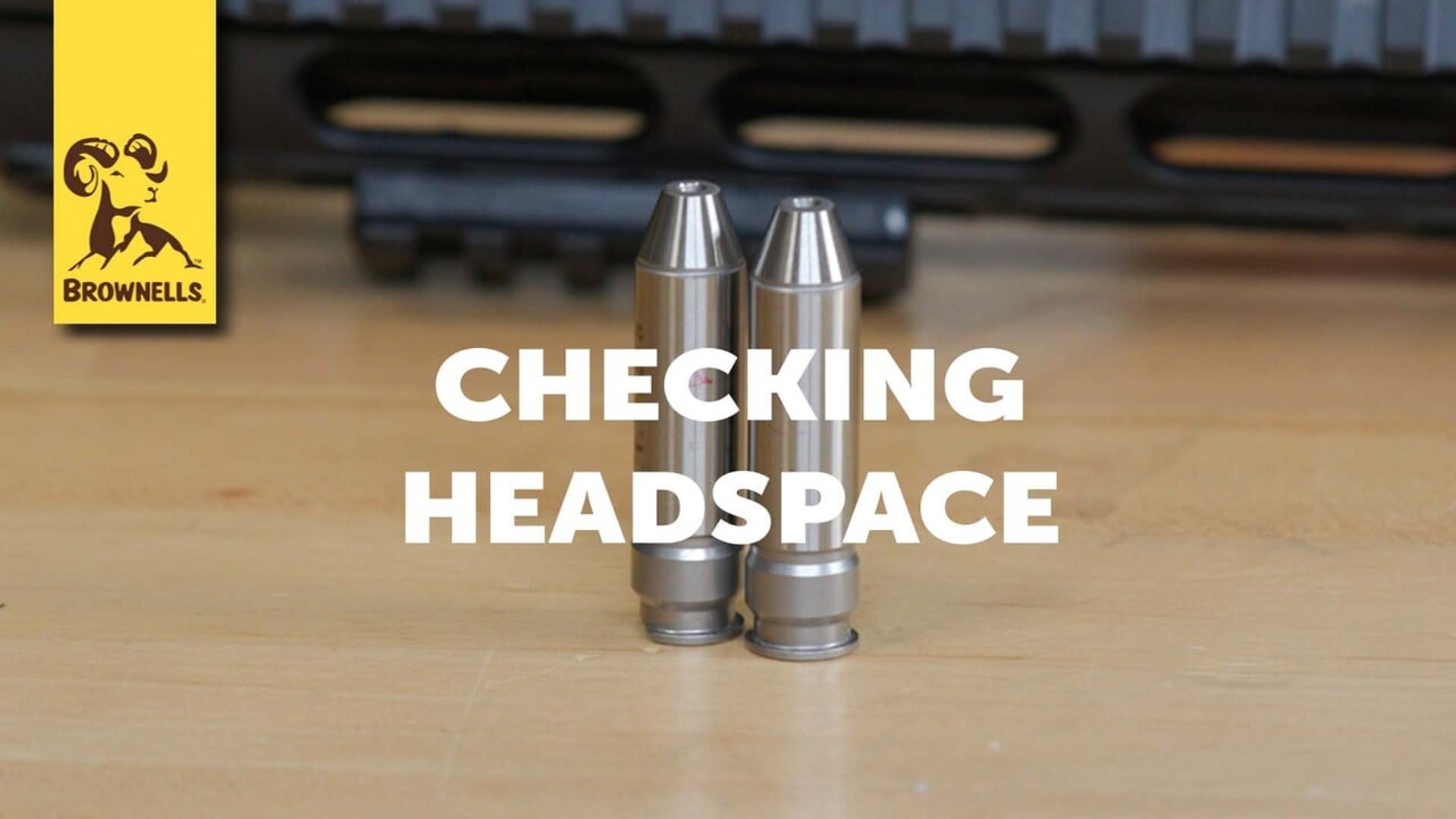SmythBuster: Checking Headspace
Steve:
Hi, I'm Steve.
Caleb:
And I’m Caleb, from Brownells. Welcome back to another episode of Smith Busters!
All this week, Caleb’s been pacing, muttering, and frankly, a little irritable.
Steve:
What’s bugging you, man?
Caleb:
Well, Steve… there's this persistent myth floating around—almost like a cult following—that says you absolutely have to strip your bolt in order to check headspace.
Steve:
You mean removing the extractor and ejector every time?
Caleb:
Exactly. And apparently, every time I check headspace without doing that, people online lose their minds.
Steve:
Gotcha. Sounds like a common misconception.
Caleb:
For those of you unfamiliar with what headspace is or how to check it, we've got great videos on that—go watch those first for a solid foundation.
But if you're already familiar with the process, then this video—and this post—is for you.
Do You HAVE to Strip the Bolt?
We’re not saying you're wrong if you prefer to strip the bolt. If that's your process, more power to you. But honestly? We almost never do it that way.
Caleb:
If you work in a shop, you just don’t have the time. As they say: “Ain’t nobody got time for that!”
Take this rifle build, for example. When I checked the headspace, I didn’t strip the bolt. Here's what we mean:
-
On the bolt face, you have the extractor and two ejectors.
-
Some people say these need to be removed or you’ll get a "false reading."
But when asked why, most folks just say, “That’s how I was taught.”
Does It Actually Affect the Reading?
Some argue that the ejector adds “unnecessary tension,” interfering with the bolt closing properly. But here’s the reality:
-
The mechanical leverage from the bolt handle and lugs far outweighs any spring tension from the ejector.
-
The tiny spring in the ejector is not strong enough to overcome metal-to-metal contact between the gauge and chamber.
As long as the ejectors compress flush with the bolt face—which they should—you're good to go. If they don’t, you’ve got a different issue to address.
What About the Extractor?
Now here’s where the concern is slightly more valid.
Caleb:
If you just drop a headspace gauge into the chamber, your extractor (especially in push-feed systems) has to clip over the rim.
Some extractors handle that better than others, and you might not want to risk damaging it by forcing it. That’s understandable.
Options:
-
Use a gauge cut to clear the extractor.
-
Clip the gauge onto the bolt manually before chambering.
-
Remove just the ejector, especially with rifles like the Remington 700. You can’t easily remove the extractor without risk.
AR-Style Rifles (AR-15s, AR-10s, etc.)
The same logic mostly applies here:
-
They use plunger-style ejectors and hook-style extractors.
-
In most cases, you don’t need to disassemble the bolt.
-
Only do so if the extractor absolutely refuses to override the rim of the gauge.
If you’re working with tight match chambers that are under SAAMI spec, that’s another valid reason to consider removing parts for smoother operation.
So, What’s the Verdict?
You can strip the bolt if it makes you feel better—but you don’t have to in 99% of cases. There's just no functional reason to do it unless the bolt physically can’t close over the gauge.
If you disagree, we want to hear from you! Drop us a comment:
-
Have you tested both methods?
-
Do you have data or experience that supports stripping the bolt?
-
What scenarios have proven it necessary?
We’re genuinely interested in understanding where this insistence comes from—so bring your facts, not just theories.








